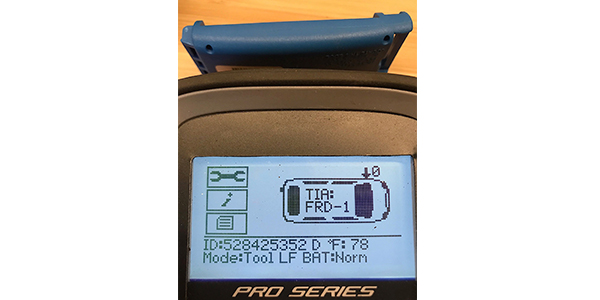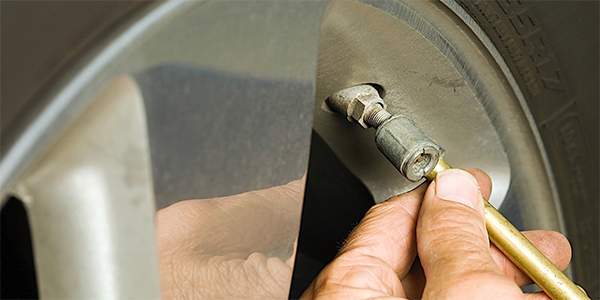During winter, low temperatures may cause customers’ TPMS warning lights to illuminate while they are driving to work in the morning. Once the tire has warmed up, or later in the day when the temperature rises, the TPMS warning light will go out.
When customers come into the repair shop after experiencing a similar scenario, it’s important to check to make sure there isn’t an underlying TPMS issue that requires further diagnosis.
TPMS problems can include any of the following:
- A TPMS sensor has stopped functioning because its battery has died.
- A TPMS sensor is working intermittently due to a weak or failing battery.
- A TPMS module is not receiving signals from one or more sensors because of an antenna or wiring fault.
- A TPMS module is not functioning properly or has failed because of a voltage supply, wiring or internal electronics fault.
- The relearn procedure not being done correctly after a tire rotation or other service.
- The vehicle’s owner not understanding how the TPMS works.

The first step in diagnosing an intermittent TPMS warning light is to use a TPMS diagnostic tool to activate and check the response signal from each tire pressure sensor. This will confirm if the sensor is operational and, if it is, let the technician know if the pressure reading is correct.
The customers should also be educated about reading tire pressure. Many still use spring-loaded stick-style tire pressure gauges that can vary by up to 5 psi or more. This 5 percent variance can come into play because TPMS warning lights illuminate when the tire pressure drops 25 percent below the OEM-mandated inflation pressure.

It is also important to remind drivers that properly inflated tires are essential for safe driving and fuel savings. It is estimated that vehicles lose 1% of their fuel economy for every 3 lbs. a tire is under its recommended psi. To put that into perspective, tire pressures will change about 2%, or about 1 psi, for each 10° F drop in temperature. So, as the seasons change, and as 80º F dips to 20º F, that could mean a difference of 6 psi, a drop in fuel economy and an illuminated TPMS warning light.














